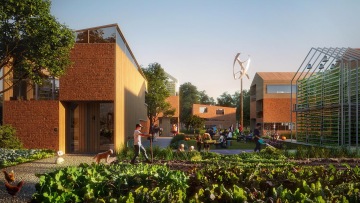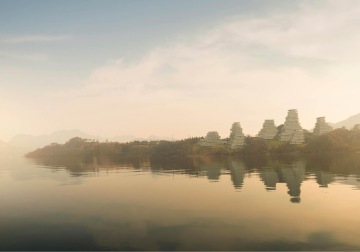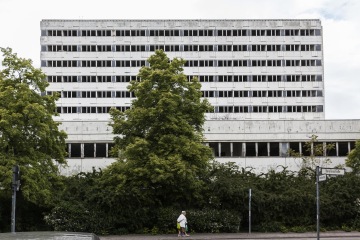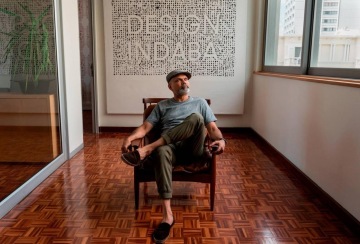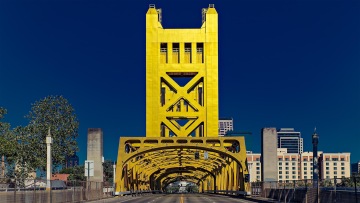
Regenerating Cities, Transforming Communities with Christopher Cabaldon
Throughout Christopher Cabaldon on-going, 20-year-long seat in office, West Sacramento underwent has undergone and incredible transformation from a former industrial town to an urbanized, livable community. Hear from the man behind the city’s outstanding urban regeneration.
Listen to Christopher Cabldon on Design and the City now:
reSITE: The longest-serving mayor in West Sacramento’s history, an LGBTQ+ advocate, and the man behind the city’s outstanding urban regeneration that put it on the map as one of the most livable small towns in America, Christopher Cabaldon is a model city official.
During his on-going, 20-year-long office, the California capital's adjacent city underwent an incredible transformation from a former industrial town to an urbanized, livable community.
Christopher Cabaldon: I'm the mayor of West Sacramento which is the old industrial city at the core of the Sacramento region in California. Sacramento is the capital of California. We were the forgotten, abandoned industrial city at the core of the entire region. I've been a mayor there for twenty years. I'm also a professor of public policy at Sacramento State University. I ran for mayor and thought I'd serve for two years, fix some things and then move on, and have been there ever since.
In part because West Sacramento has become a fascinating story of regeneration in the most fundamental way. About a place remaking itself along a whole bunch of dimensions but still being the same in terms of its people and its heart. It's been an incredible journey and it's highly unusual in the US for a mayor to serve as long as I have, but it's been a labor of love and in the end, I'm really proud of where we've come.
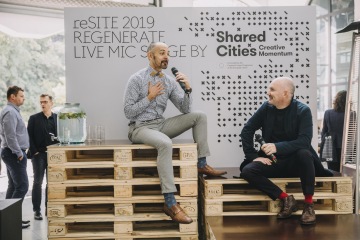
reSITE: We sat down with Mayor Cabaldon after his presentation at reSITE to discuss what the term ‘regenerate’ means to him, and how it helped revive and reshape the city of West Sacramento.
Cabaldon: I love the term because I think we haven't talked about it, at least in the US, about redeveloping properties and parcels. The notion of regeneration is broader both in scale, and scope and space. Also, for me, regeneration is something that happens in a place, by a place. It's not exactly predictable - what it is going to turn out to be - in a way that the development feels very much linear and planned.
Generation is also planned to some extent but there is more of a sense of delightful surprise in regeneration, in an understanding that the forces that shape a place are more nuanced, more complex, more interesting than just the planners.
Regeneration is something that happens in a place, by a place. It's not exactly predictable.
It's an old industrial area that could have been redeveloped or regenerated in a way that so many other large industrial areas have been. A single property owner with a master plan develops the entire thing and it's wonderful, its visited, but it's not exactly something you want to live in. In my city, we have this exact location but it's not owned by a single property owner.
That's made it a challenge from an economic perspective to be able to move it, but as a place that we are generating, it's been pretty spectacular because it is a mix of all the new, of different generations of people contributing something. It's a mix of people living together in ways that we didn't experience much. It's more urban than prior patterns in the Sacramento region have been. It's urban in a way where there's subsidized housing for low-income folks living right next door to a judge, to the mayor, to a university chancellor, combined with art for the first time. In fact, probably the most famous piece of art in my city is by a Czech artist.
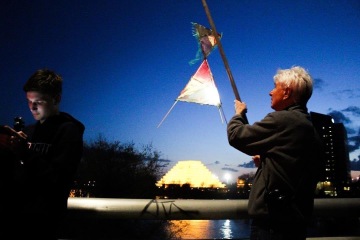
reSITE: From public art to multi-generational third spaces, Mayor Cabaldon understands the power of placemaking, and how responding to various generational needs collectively impacts the lives of his constituents for the better.
Cabaldon: Under California's approach to dealing with climate change...this will sound like a strange way to get to the answer to your question, but California says look, whatever key strategies for fighting climate change, it's going to be changing the way we live on the land using less transportation and driving in a way that is socially inclusive.
California invests in building subsidized affordable housing but also California is recognizing, to its credit that it's not just about the four walls, you're creating a community for people to live in. If you really want to get people to live in the city and to get rid of their car, it can't just be about the kitchen, and the bathroom, and the bedroom. It's also got to be about the park and the place. California has this fund that's basically just for art. That's paid for with cap and trade dollars from the polluters. You have to build affordable subsidized housing in order to qualify.
It's not just about the four walls. You're creating a community for people to live in.
It's been fantastic because I've been able to make the case locally - If we build this kind of affordable housing that some people don't want in the city, they think its going to be a slum or its bad, then we get these other dollars from the state to support parks and art. That happened in this case and we did an international competition. A Latin American artist who's spent most of his life here in Prague was the winner. He worked with shapes, nature, and math in order to create a sculpture right on the waterfront in my city. That is one of the most loved, appreciated and complex pieces of art in the Sacramento region.
The area where the sculpture is, where I live, where the subsidized housing is, also where there is an internationally known social venue. It's partly a brewpub, partly a music venue but it's much more than that. It's called ‘The Barn’ and it's mostly outdoors. It feels like a brewpub, and yet it's reimagining the way that we interact generationally in the city.
When I was growing up my parents had to decide each weekend if they were either taking care of kids or getting a babysitter and then go out. That's the choice of that generation. If we want to go out and have fun, we have to get a babysitter. What this place is doing - this barn - in my city is that people come to drink and get crazy, and they bring their kids with them. Their kids run free in an enclosed barnyard, basically. There are also plenty of people who are 70 and 80 years old, their dogs. It is a fascinating shift in the way that we generationally think about socializing and fun. Rather than splitting up into our tribes, everyone's coming together. That project has been a really profound example of what regeneration can accomplish.
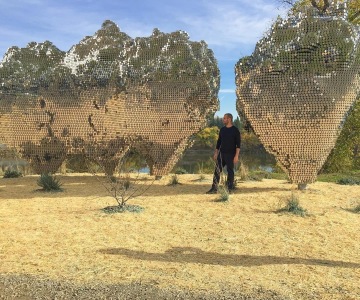
reSITE: That was a great example of how we can regenerate to create spatial diversity. It leads us to another universally growing issue making a lot of waves in Northern California right now - affordable housing. Just an hour or so drive from San Francisco, like most cities in its vicinity, West Sacramento has been hit with spillover from Silicon Valley’s tech boom. We dove into the topic of housing and what that looks like in terms of building or rebuilding, sprawling or densifying with such high demand.
Cabaldon: Along with climate change, this is probably the biggest challenge that we face in many cities around the world, certainly in California. It's an enormous one. My city in the Sacramento region is adjacent to the San Francisco area and Silicon Valley. Our challenge is that we're trying to deal with the affordability crisis just in our own city but also, with thousands of people coming from San-Francisco who cannot find a place to live there.
It's a double whammy, we have both our own, indigenous problems with affordability and then we have all these housing refugees from San-Francisco that are coming. We're building fast, my city's doubled in population and we'll double again but it's not enough in order to keep the prices affordable.
If you really want to get people to live in the city and to get rid of their car, it can't just be about the kitchen, and the bathroom, and the bedroom. It's also got to be about the park and the place.
I think the other challenges we're trying to grapple with is the cost of building. It's incredibly expensive, the amount of money we spent to build a housing unit today compared to a generation ago. If you spend three or four hundred-thousand dollars building a unit it's going to be hard to sell it for less than that just in terms of construction cost. Part of it is looking at the regulations.
Also, we have taken a whole bunch of social and public policy goals and put it in the housing. As a result, housing's got a lot more expensive. As an example, in California we are very environmentally-oriented, we're really trying to battle climate change. We have a new law that says that every single house is going to have a solar panel on it. That's fantastic! But it also means that the price of building houses now has gone up.
We've said that every single house will be accessible. We're sort of signaling what our values are by putting them all in the housing policy, but by doing that we've made the cookie-cutter price of building housing more than it should be. I think part of our challenge is building a lot more and that's some part of that is on land use regulations and on financing, but we're not going to crack that until we also deal with the cost of housing that we've created.
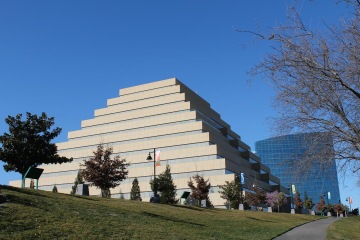
reSITE: We discussed the hot topic—climate change, and how that is shaping Christopher’s efforts in combating it through changing the city’s infrastructure - but it’s not without pushback from other engaged parties.
Cabaldon: Our biggest challenge first was to stop doing the worst things that we were doing before. We were this kind of place that just keeps building outward and outward and outward onto farmland. The was us, the West Sacramento region. We were building on every piece of farmland and natural habitat there was, because it was cheap. Then we were spending a lot more money on transportation infrastructure. Everyone is driving everywhere, it is just an utter disaster.
So, job one—stop doing stupid things and stop sprawling. That was number one and that is still a work in progress. The political and economic forces behind sprawl, they fight back. We're still fighting that one and directing the public investments towards living without a car, making it both possible and desirable.
That's a major proportion of building energy efficiency, which is important for us as well, although less so than it is on the East Coast of the US because so much of our energy comes from renewable sources. We don't have coal plants on the West Coast, but the reduction of energy is definitely a big part of our strategy both for California, and my city specifically.
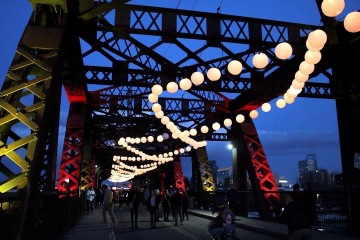
reSITE: We asked how he likes to connect to his own city as well as how he stimulates his curiosity about others, regenerating himself as an actor changing a city.
Cabaldon: I used to basically live on the Sacramento river playing, swimming, wakeboarding, and recreating. Now I mostly regenerate by traveling, exploring and experiencing other places, rechallenging myself to live in other places where I'm not the mayor. Spend two days in Prague where nobody knows who you are, you can give a speech, you barely speak the language but can you still navigate a city, can you still interact with people, can you still survive and thrive?
For me, it's regenerative because then I can understand better not only the daily struggles but also the daily opportunities, and how the folks that I represent back home—how they experience my city in ways that we've never thought about in my own community. I'm super curious and love to learn about things that are not in our daily vision back home.
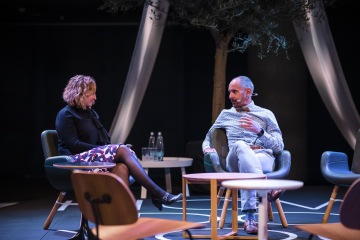
Next, you will hear from Cabaldon along with Lenka Kabrhelová from CzechRadio as they discuss the 20-year evolution of West Sacramento at reSITE 2019 REGENERATE.
Lenka Kabrhelová at reSITE: You’ve spent two decades, as I’ve said, in the seat of the mayor of West Sacramento. What would you say small cities can give as advice to larger cities, for example, as Prague?
Christopher Cabaldon at reSITE: Well, I think part of the lesson from small cities are there in the place and people matter as much as issues and opinions. My city - the phrase you would use in the U.S.— ‘the other side of the tracks’. It was the old, abandoned industrial place in the Sacramento region that was forgotten and disrespected, where all the new housing and new development in the region was occurring in the mountains—on farmland and in habitat. And out city as a result, as we started to remake ourselves and regenerate ourselves, we never forgot where we came from.
Place and people matter as much as issues and opinions.
We were still a poor, scrappy little city trying to do something, and our people felt that as well. For many of the larger cities, their discourse occurs through the mediating influence of organizations and big interests and opinions. So across the river from my city in the capital, citizens interact with their community and with their place as members of an environmental organization or members of ethnic organizations.
In my city, because its smaller, you interact as the human being that you always were. The result is quite different in terms of the kinds of decisions that get made, the kinds of risks that the community is willing to take, in the ways in which generational change can happen when you think of each other as people and not just as bundles of opinions and judgment.
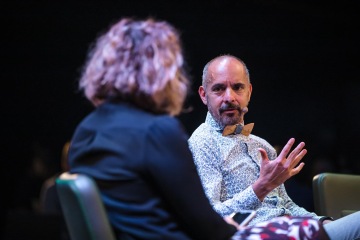
Kabrhelová: What was the turning point, when you look back at those twenty years. So the city has gone through the regeneration, which we’re talking about here today. What was the turning point for you?
Cabaldon: This will sound awful, but the major step-change in our city was the construction of a professional baseball stadium. And not for the stadium itself and not for the direct impact on the economy, but it was the first major project that we did as a city everyone outside of the city that was something good. Our entire metropolitan region was pulling for us to succeed.
What happened was that residents in my city who before that felt as though they were less than others, they didn't want to put West Sacramento as their return address, and their posture was not so good. After that baseball stadium they stood up taller, they had expectations, they believed that they could do something, and maybe interacting with the rest of the world, and the rest of the region was not so dangerous. So the confidence that came, the expectation that came and the notion that if we really work together to do something, we can make a miracle happen.
And so for me it was to go around the city and say: there's this empty lot that's full of needles and drug paraphernalia, and for 25 years we’ve said we can’t clean that up, it’s just too hard. I would say that when we've just built the major professional baseball stadium for the entire region, surely we could clean up this one yard. Or, the number or the proportion of young people that could read at grade level was 17%. Surely, we could do something about that if we just built that stadium. I don't recommend professional sports necessarily as the thing but it became the lynchpin of a change in social psychology that was really essential for the regeneration that we've experienced to take place.
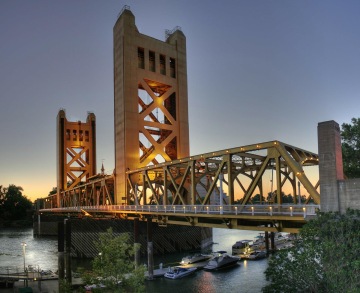
Kabrhelová: It’s basically a metaphor for a new identity, and people adopting a new identity. How do you do that?
Cabaldon: Because of where we had come from, appetite for change might be a little strong. I think one of the things I've learnt is that people are not really opposed to change, they believe that they will be opposed to change but they're very poor judges of their future-selves. They are not any better than we are actually at determining five years from now, five months from now— what will I think about this change? We’re used to not making changes at all because citizens will come forward and say: “No, please don't build that” or “Don't do that here”. But they hadn’t experienced it, they just had an idea of it and an opinion that they came up with very quickly which is always “No, no, no”. We just started to do the things instead.
So, rather than asking “What do you think about bike share?” Just is an example, because we knew what people were going to say—“It's too messy, we don't want it, we like order in the city”—we ended up doing it and now our bike share system our scooter system generates more rides than Uber and Lyft, which for an American city is a pretty extraordinary change. And that happened because the grandmother who in the community meeting said: “Absolutely not. I would never ride one of the scooters, that's crazy, I don't want one of those bikes. I will never, ever do that and I don't want to see that in my city.”
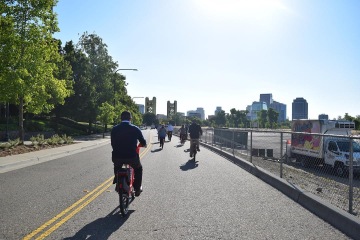
Legitimately, that was her belief about her future self. But, then one day her granddaughter says “Hey grandma, let’s go get ice-cream, and you know, my older brother one week took me on one of these scooters, will you come with me?” And Grandma, says "yes, I will go with you" because this is one of those moments you don’t want to lose in your life. So she gets on the scooter, now she loves it, she can’t imagine living without it. She’s the same person but her projection into the future of how she would react to change into new opportunities in the city just wasn't that accurate. Now that doesn’t mean all grandmas always will want to ride scooters, but it should be a reminder that just asking yourself what do you think about your future state, is not going to be that great.
There’s a generational question of that is that we’re not even very good at projecting our current self, particularly generationally. We’re one of the World Health Organisation’s age-friendly cities. And we’ve been implementing a whole set of policy and planning and changes around being a great place to age. We’ve learnt, although we should’ve known this already, that we don't have old people in the city. Everyone is “Yes, I'm eighty, but eighty is the new sixty.” We’ve been doing these programs and workshops about social services and access to Meals on Wheels and food support, or whatever. And folks will say “Hey, that’s great, mayor, but I’m on my way right now to go rock-climbing, and then I’m going to have some kombucha, and then I’m going to head over to a local brewpub for a game of cornhole.”
An ecosystem in a city where people can express themselves through actions, choices and creativity.
That set of millennial activities that seventy- and sixty-year-olds are engaged in because they have decided that... they’ve adapted a different sense of generation. They still need transportation support, health support and all of that. But if you don't accept their identity that they try to project, which is not a generational we tend in a policy world to want to project. If you don't accept that and if you treat them as a bundle of deficits, and health problems, and mobility issues, and all that, then you miss the essentials around serving their actual needs. So this generational question around folks getting engaged in the city and how the city changes them, I think it’s been a really important lesson for us.
If your city does not change your opinions, if you try to build a city based on everyone's existing opinions, you don't use the city to change opinion, what's the point? Why have a city? I can live in a suburb or small town. The point of the city is to challenge myself, to put myself in novel situations. Many of our large-city colleagues, they are interested in just serving, and polling, and having community workshops, and asking "what do you think?" I think our task as a smaller city is to say we’re going to do things, we hope you will do things, we’ll see how they go, and as long as they are not nuclear weapons, then if it doesn’t go well, we can try something different.
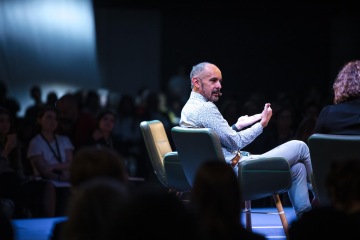
Kabrhelová: So it needs to be a two-way situation, and a two-way relationship and that the city communicates with the people?
Cabaldon: So I am an LGBTQ+ mayor in the US, and I'm also highly skeptical of the “public is always right” and the “polls are always correct” because I’ve spent most of my life unable to live openly, or to love or do any of those things because of public opinion. I don't start from the point “we need to find out what the public thinks, we need to get consent.” Instead, it is the creation of an ecosystem in a city where people can express themselves through actions, through choices, through creation in addition to voting and other mechanisms. But we don't fetishize the notion that opinion is what really matters.
My real job was to unleash people to do amazing things that I never thought of, and then allow the community to decide by its actions whether they want to embrace them.
That’s a hard thing for politicians. I probably wasn't there in the first couple of years but in year 2011-2012, I started to realize my real job was to unleash people to do amazing interesting things that I never thought of and probably thought were a bad idea; to create things and then allow the community to decide by its actions whether they wanted to embrace them.
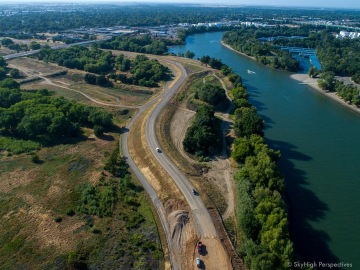
Kabrhelová: What a pretty unique approach for a politician. You’ve set the blueprint for the future in the region. Can you explain what does it entail when you take us there?
Cabaldon: In the US, in particular in California, as Kate [Wagner] was describing in her McMansion work, we’ve had an enormous drive towards sprawl in the last two generations, and my region is no exception. We’re one of the richest agricultural valleys in the world but we've been building, and building, and building, and building single-family homes on large lots for years.
So we decided as a region we had to change that, it was not sustainable, climate change, transportation spendings —all of those things. So we have been building differently in our region. My city made example of that. It's a challenge though, because, you know, we are right next to the San Francisco Bay area, just an hour away by car or by train. And in a state with a massive housing crisis, where millennials in particular but folks of all ages can't find housing, that's a challenge in a lot of places around the world.
We are experiencing it ourselves. In my city today, it's a lot safer than it was twenty years ago—education is better, you're exposed to less toxins, there is a lot more healthy food healthy food-all those things actually should drive up the price of the homes, it should be. If the real estate market is working, then those things should make housing more valuable. And we’ve doubled in population and doubled in housing as a result. And yet, our prices still have also doubled because I can't build fast enough to meet my own response to gentrification plus thousands of people coming from San Francisco who have nowhere to live.
This notion that a city changes us as much as, it's our job as citizens to vote on what the city should be, we also have to be ready for the city to shape us as humans.
We’re dealing with both forms and I think it's a particular challenge for us because in San Francisco, or London, or elsewhere if you zone and allow for the construction of a large multifamily housing development, it's going to get built. So the challenge in California state has been how do we make cities create more land for the big housing but that's not a problem in my part of California. In Los Angeles, and San Diego, and San Francisco—yes, but my part of California, we can’t get financing to build. If I create more land for multifamily housing, I have to build more infrastructure for multifamily housing even though it's not getting built at that level.
So it’s a real conundrum for us in California because as I look at the empty pieces of parcels in my city that are ready for regeneration, if I build them today given where the market is at, they’ll be four, five, six stories high. They should be two, three, four times bigger than that based on what are environmental, social, economic and generational equity objectives are. So do I wait until the market’s ready for that or do I take all the land in my city and build today at a reduced level? So this is a real challenge outside of the of the coastal areas in California in the US, how we’re supposed to grapple with the issue of housing and gentrification.
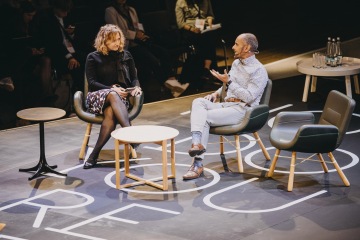
Kabrhelová: When I look I understand that there are very specific things tied to the specific region. Here we are in the middle of Europe where cities are also, or a little bit differently, structured than in the US. But do you still see some sort of similar problems and also solutions which you could offer as a mayor of a rather smaller city?
Cabaldon: Yes, the notion of what a city is is still fundamental across country lines. This notion that a city changes us as much as, it's our job as citizens to vote on what the city should be, we also have to be ready for the city to shape us as humans. That is a universal lesson which often not appropriately understood. My family’s originally from next door, from Slovakia and the Philippines. They came to the US just for this sort of urban experience, but I think now when we look back at what’s happening here, without the McMansions, without some of the challenges that we see in California, we’re seeing a sense of creative energy, and diversity, and design, and a sense of place for us, at least is inspiring.
That was the Mayor of West Sacramento, Christopher Cabaldon - an urbanist in his own right.
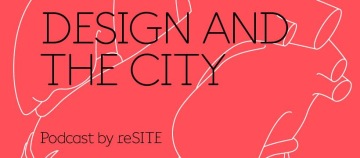
Design and the City is brought to you by reSITE and organized as part of the project, Shared Cities: Creative Momentum. This podcast is produced by Radka Ondrackova, Matej Kostruh, Adriana Bielkova, Gil Cienfuegos and Polina Riabukha. It is directed and hosted by Alexandra Siebenthal, and recorded and edited by LittleBig Studio.
Listen to more from Design and the City
Human-Centered Smart Cities with Marianthi Tatari
Associate Director and Senior Architect at UNStudio, Marianthi Tatari, dissects different aspects of city-making that threaten the quality of life such as mono-functional spaces and commoditized smart cities and how to approach designing them with optimism. Photo courtesy of UNStudio
Creating Emotional Connections to Nature with Yosuke Hayano
Yosuke Hayano, principal partner for MAD Architects examined how the studio approaches every project with a vision to create a journey for people to connect with nature through architecture. Listen as he draws on specific projects that embody that connection on a macro and micro level. Photo courtesy of MAD Architects
Fighting Gentrification, Berlin-Style with Leona Lynen
A vast, unoccupied administration building in the heart of Berlin at Alexanderplatz - Haus der Statistik - has become a prototype for gentrification done right. Hear from Leona, a member of the cooperative, ZUsammenKUNFT, as she discusses how they are developing a mixed-use urban space oriented towards the common good. Photo courtesy of Nils Koenning
Giving Design a Higher Purpose with Ravi Naidoo
Ravi Naidoo, the driving force behind Design Indaba, arguably the most influential design event in the world. The event takes place annually in Cape Town is only the tip of the iceberg. Listen as he pushes the boundaries of the purpose design holds with the simple question—what is design for? Photo courtesy of Design Indaba
